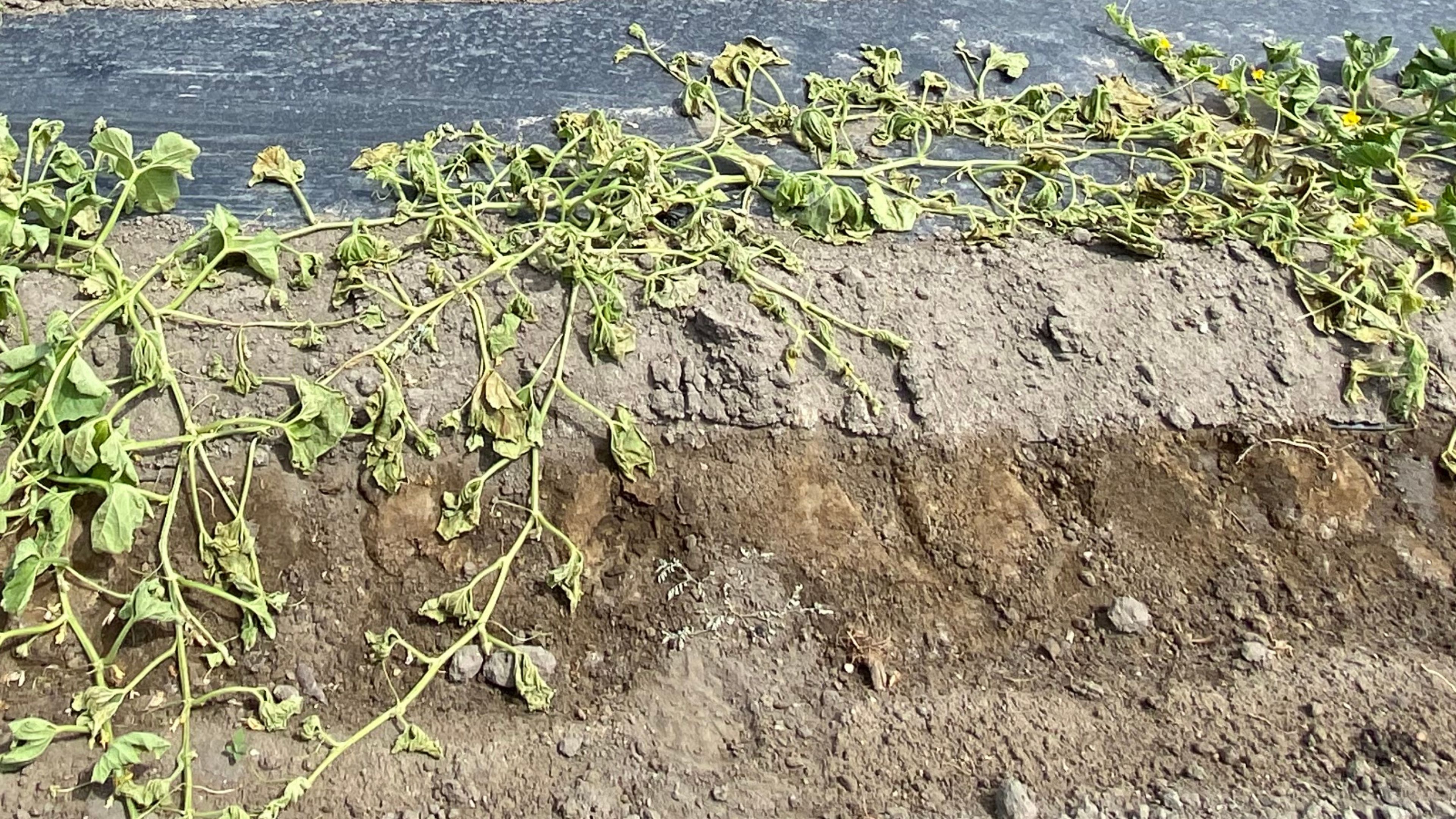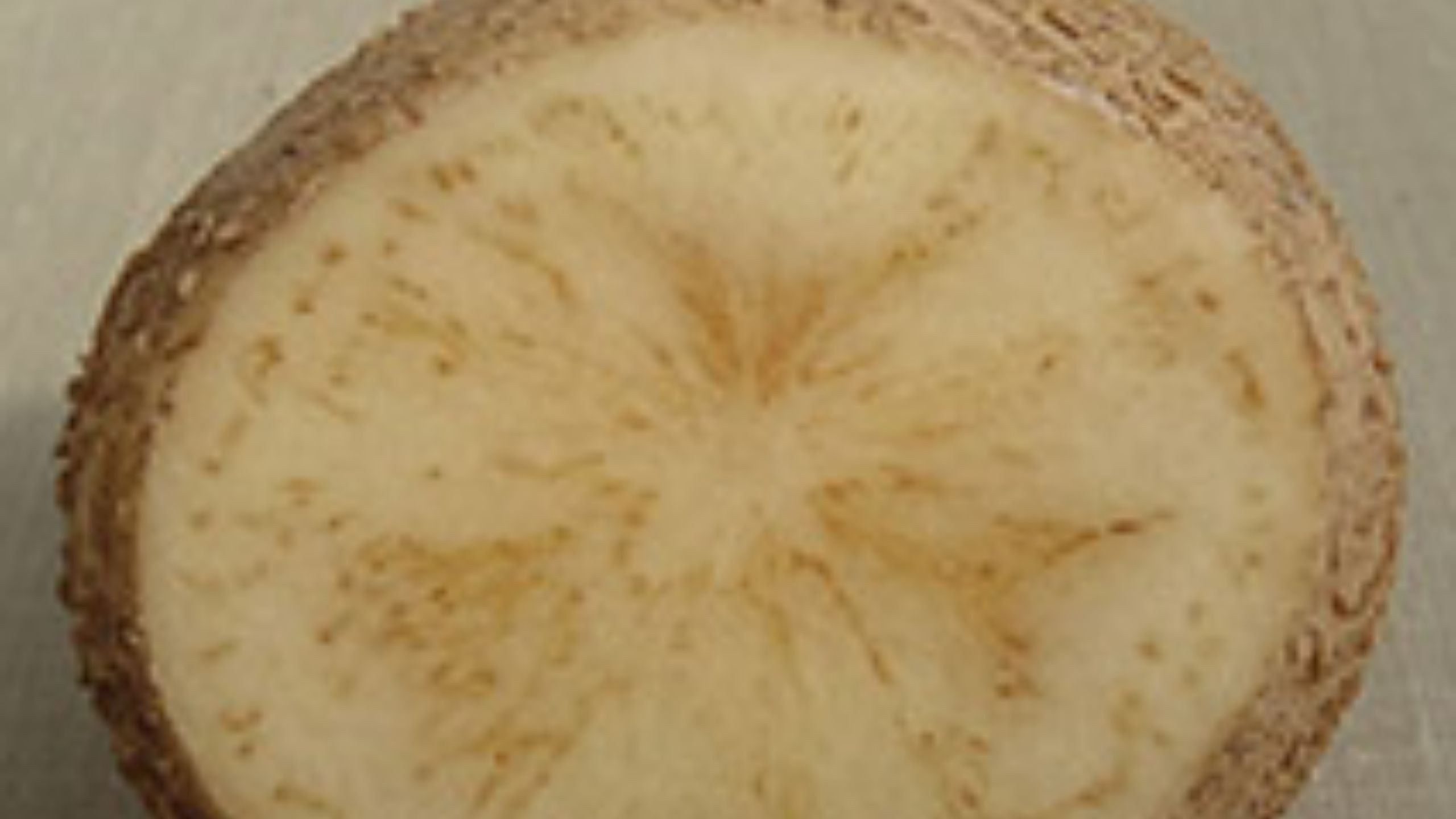Pink Root of Onion
July 2012
Claudia Nischwitz, Extension Plant Pathologist • Christine Dhiman, Research Assistant

Fig. 1. Onions with pink root caused by Phoma terrestris
in field

Fig. 2. Onion roots with symptoms of pink root disease
Quick Facts
- The disease is caused by the fungus Phoma terrestris
- Fungus is commonly found in soil
- Infects roots but not basal plate or fleshy scales
- Disease can get worse when onions are planted after cereals or in very short rotation with onion
- The disease is greatly enhanced when plants are stressed
Pink root (Phoma terrestris) is a devastating disease in onion production. The fungus is found worldwide in the soil and can be up 45cm (1.5 ft) deep. Phoma terrestris is primarily an onion pathogen but can occasionally cause disease on other plants such as cereals, corn, cucurbits, pepper, spinach or soybean. Plant stresses such as drought, cold, nutrient deficiencies/toxicities, insects and other diseases can increase disease severity.
Symptoms
Above ground, severely infected plants are small and stunted. Leaves start to die back. Symptoms above ground can simulate drought or nutrient deficiency symptoms. Below ground, the characteristic symptom is pink colored roots that give the disease its name and make a diagnosis in the field easy. The roots later turn dark red or purple and start to dry up. Eventually the roots die. It will spread to newly produced roots which leads to reduced bulb size because of the restricted root system. The continued infection of new roots prevents plants from reaching marketable size.
Disease Cycle
The fungus, Phoma terrestris, is commonly found in soil. It can penetrate onion roots directly without the need for wounds and less vigorous plants are more susceptible. Symptoms develop 7-21 days after infection (Babadoost 1990). Phoma terrestris can survive for a very long time in soil and feed on plant debris. It is most active at temperatures of 75 – 85F (Davis et al. 2012). The severity of the disease is higher in fields with heavy, poorly drained soils and incidence is increased every time onions are grown in a field. The pathogen can be spread by irrigation water to unaffected areas in fungus but not against the more virulent ones.
Leaves of infected plants often become infected with other pathogens such as Alternaria porri (causal agent of purple blotch). Yield losses are greatest when plants are infected early in the season resulting in a poor root system that cannot keep up with water uptake during hot temperatures (Celetti 2005).
Management
The best management option is the use of resistant varieties. There are resistant onion varieties available but resistance levels can vary from field to field due to genetic variability of the pathogen. Talk to your local seed provider about varieties that may work in your area.
Maintain healthy plants with optimum fertility, control of
other diseases and insect pests, and avoid planting onion after onion. Even though crop rotation does not have an effect on the disease, planting onion every five years can keep disease incidence low. Disease incidence goes up with every onion crop and when
onions are planted after cereal crops.
Another option is soil fumigation using metam sodium or chloropicrin which works against some strains of the fungus. However, fumigation is very expensive.
References and Further Reading
- M. Babadoost 1990. Pink root disease University of Illinois Extension RPD No. 932
- M. Celetti 2005. Pink root of onions.
- R. M. Davis, B. J. Aegerter. 2012. UC IPM Pest Management Guidelines: Onion and Garlic UC ANR Publication 3453.
Related Research




















